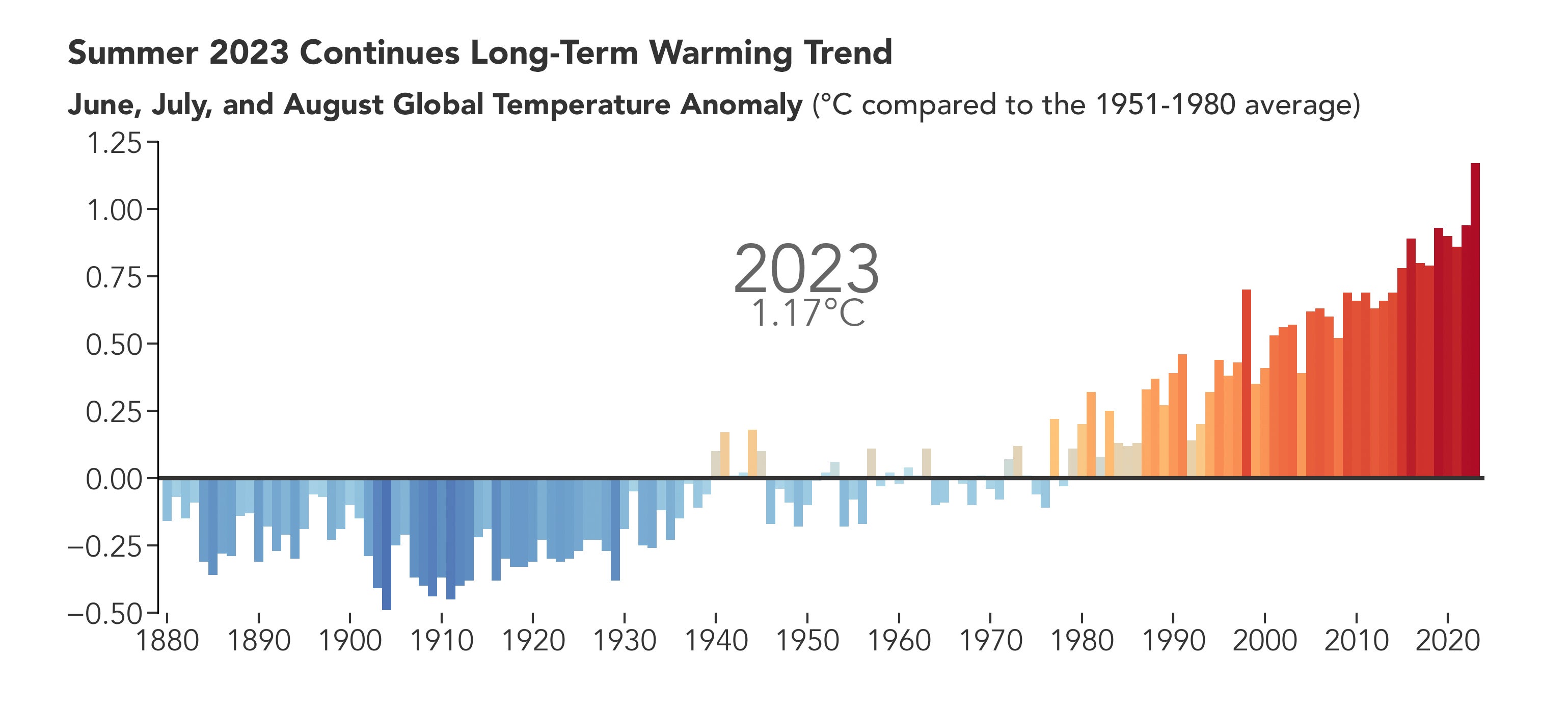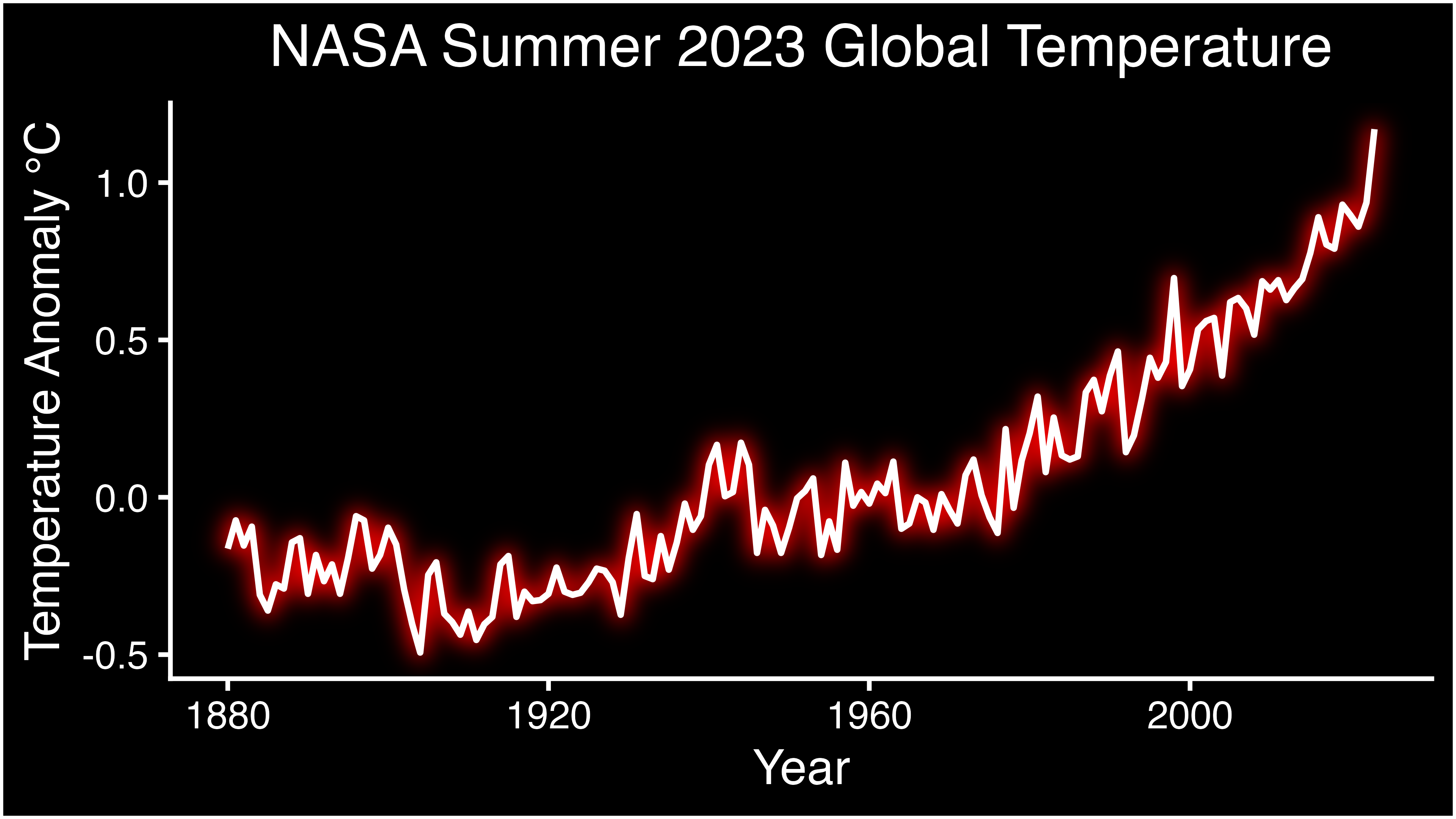Mapped: Nasa reveals how much hotter 2023 summer was than average
Last three months said to have hottest summer in Northern Hemisphere and warmest winter in Southern Hemisphere
Your support helps us to tell the story
From reproductive rights to climate change to Big Tech, The Independent is on the ground when the story is developing. Whether it's investigating the financials of Elon Musk's pro-Trump PAC or producing our latest documentary, 'The A Word', which shines a light on the American women fighting for reproductive rights, we know how important it is to parse out the facts from the messaging.
At such a critical moment in US history, we need reporters on the ground. Your donation allows us to keep sending journalists to speak to both sides of the story.
The Independent is trusted by Americans across the entire political spectrum. And unlike many other quality news outlets, we choose not to lock Americans out of our reporting and analysis with paywalls. We believe quality journalism should be available to everyone, paid for by those who can afford it.
Your support makes all the difference.Earth recorded its hottest summer on record this year, data from the American space agency Nasa and the National Oceanic and Atmospheric Administration (Noaa) confirmed in new maps that reveal how quickly the world is heating up.
The last three months had the hottest summer in the Northern Hemisphere and the warmest winter in the Southern Hemisphere, Nasa and Noaa said on Wednesday in a release.
The space agency, which has maintained temperature records since 1880, said June, July and August collectively recorded temperatures that were 0.23 degrees Celsius higher than any previous summer in its records.
This figure also stands at 1.2C above the average summer temperatures between 1951 and 1980. Furthermore, August alone witnessed temperatures soaring 1.2C above the usual levels.
The announcement from Nasa comes after data from the World Meteorological Organisation and European space agency Copernicus also confirmed this summer to be the hottest on record.
“Summer 2023’s record-setting temperatures aren’t just a set of numbers – they result in dire real-world consequences,” Nasa Administrator Bill Nelson said in a statement.
“From sweltering temperatures in Arizona and across the country to wildfires across Canada, and extreme flooding in Europe and Asia, extreme weather is threatening lives and livelihoods around the world.”

The record-setting summer of 2023 continues a long-term trend of heating, the release said, referring to data compiled by Nasa’s Goddard Institute of Space Studies (GISS) in New York.
El Niño, a natural climate phenomenon characterised by higher-than-normal sea surface temperatures in the tropical Pacific Ocean, may have contributed to this record-breaking heatwave. But scientists from Nasa and Noaa said the primary driver behind the extreme heat is the climate crisis caused by greenhouse gases.

“Not only was last month the warmest August on record by quite a lot, it was also the globe’s 45th-consecutive August and the 534th-consecutive month with temperatures above the 20th-century average,” Noaa chief scientist Sarah Kapnick said.
“Global marine heat waves and a growing El Nino are driving additional warming this year, but as long as emissions continue driving a steady march of background warming, we expect further records to be broken in the years to come.”

This year the world has broken several temperature records, with the first week of July having the highest temperatures ever for the month, marine heatwaves shocking scientists and historic temperatures recorded, from China to Europe and the US.
2023 is so far tracking to be the second hottest year on record behind 2016, Copernicus said earlier this month. Nasa already confirmed July temperatures were the hottest on record and the agency’s scientist warned 2024 could break this year’s records too.
"Unfortunately, climate change is happening. Things that we said would come to pass are coming to pass. And it will get worse if we continue to emit carbon dioxide and other greenhouse gases into our atmosphere,” said Gavin Schmidt, a climate scientist with Nasa.




Join our commenting forum
Join thought-provoking conversations, follow other Independent readers and see their replies
Comments